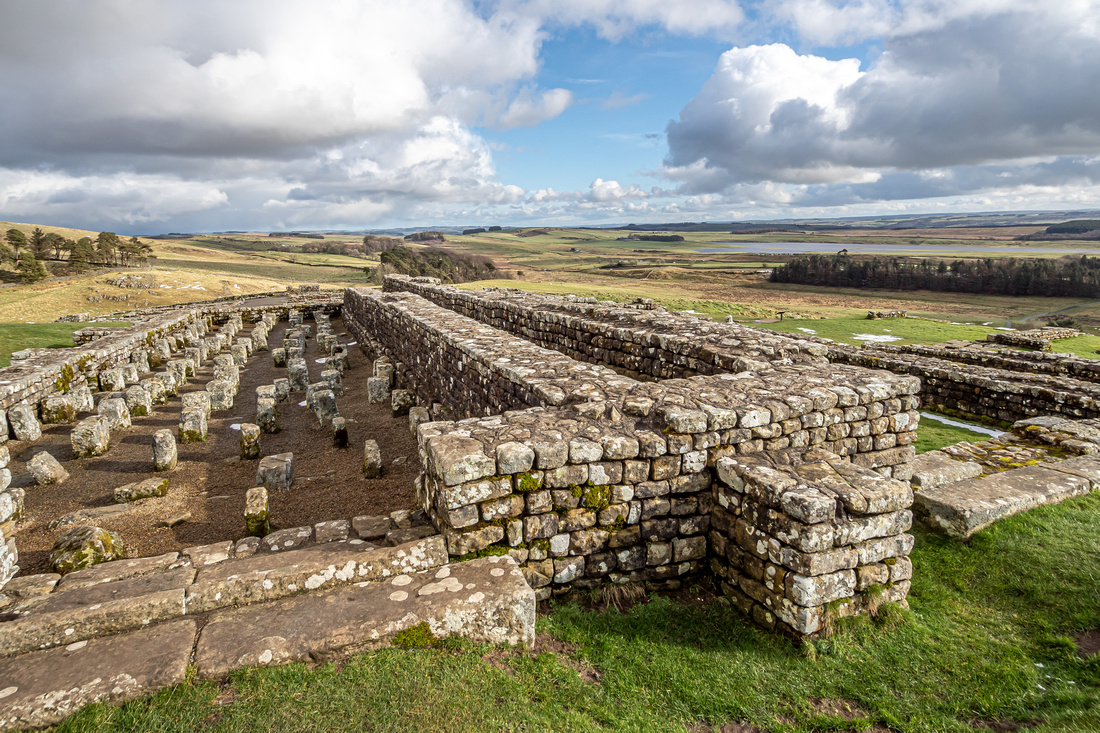Housesteads Roman Fort . . . Hadrian's Wall

 Hadrian's Wall, also called the Roman Wall or Picts’ Wall, was a defensive fortification in the Roman province of Britannia. It begun in AD 122 in the reign of the emperor Hadrian. It ran from the banks of the River Tyne on the North Sea to the Solway Firth on the Irish Sea, and was the northern limit of the Roman Empire. There were milecastles with two turrets in between. There was a fort about every five Roman miles.
Hadrian's Wall, also called the Roman Wall or Picts’ Wall, was a defensive fortification in the Roman province of Britannia. It begun in AD 122 in the reign of the emperor Hadrian. It ran from the banks of the River Tyne on the North Sea to the Solway Firth on the Irish Sea, and was the northern limit of the Roman Empire. There were milecastles with two turrets in between. There was a fort about every five Roman miles.
By the time Emperor Hadrian came to power in 117 A.D., the Romans no longer sought to expand their territory. Instead, they wanted to protect what they had—from the Caledonians (Scotland) and others.
Under Hadrian’s orders, the Roman governors of Britain began building the wall that would later be named for the emperor to defend the part of Britain they controlled from attack. In Hadrian’s words, they wanted to “separate Romans from the barbarians” to the north - Scotland.
Scholars believe the wall may have also served as a means of restricting immigration and smuggling into and out of Roman territory.
A significant portion of the wall still stands and can be followed on foot along the adjoining Hadrian’s Wall Path. The largest Roman archaeological feature in Britain, it runs a total of 73 miles (117.5 kilometres) in northern England.
It is a misconception that Hadrian's Wall actually marks the boundary between England and Scotland. In fact, Hadrian's Wall lies entirely within England and has never formed the Anglo-Scottish border.
Tuesday 25th February we travelled from Newcastle on Tyne and drove through beautiful countryside before arriving at Chollerford which is just north of Hexham in the county of Northumberland, north east region of England. We had carrot and coriander soup at the Riverside Kitchen cafe at Chollerford (lies on the River North Tyne) before driving nine miles to Housesteads Roman Fort which is a very significant section of Hadrian’s Wall. It was built at the Housesteads Roman Fort site around AD 124.
It was a very cold day which is evident by the snow around the fort. This site is operated by the National Trust and provides much historical information. One of the best things about visiting this site however is experiencing the beautiful countryside in this north east region of England.